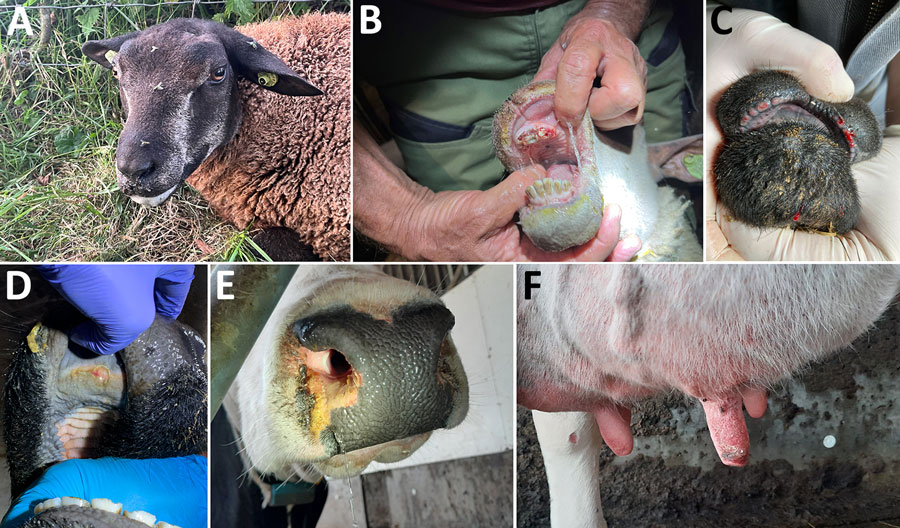Volume 30, Number 8—August 2024
Research
Emergence of Bluetongue Virus Serotype 3, the Netherlands, September 2023
Figure 3

Figure 3. Clinical manifestations of bluetongue caused by bluetongue virus serotype 3 (BTV-3) variant infections in sheep and cattle in study of emergence of BTV-3 in the Netherlands, September 2023. A–C) Hypersalivation (A), erosion of the oral mucous membranes (B), and bleeding of the lips (C) were observed in sheep infected with the BTV-3 variant. D–F) Ulceration of the oral mucous membrane (D), crust formation at the nostrils (E), and necrosis of the teats (F) were detected in cattle infected with the BTV-3 variant.
1These authors contributed equally to this article.
Page created: June 13, 2024
Page updated: July 20, 2024
Page reviewed: July 20, 2024
The conclusions, findings, and opinions expressed by authors contributing to this journal do not necessarily reflect the official position of the U.S. Department of Health and Human Services, the Public Health Service, the Centers for Disease Control and Prevention, or the authors' affiliated institutions. Use of trade names is for identification only and does not imply endorsement by any of the groups named above.